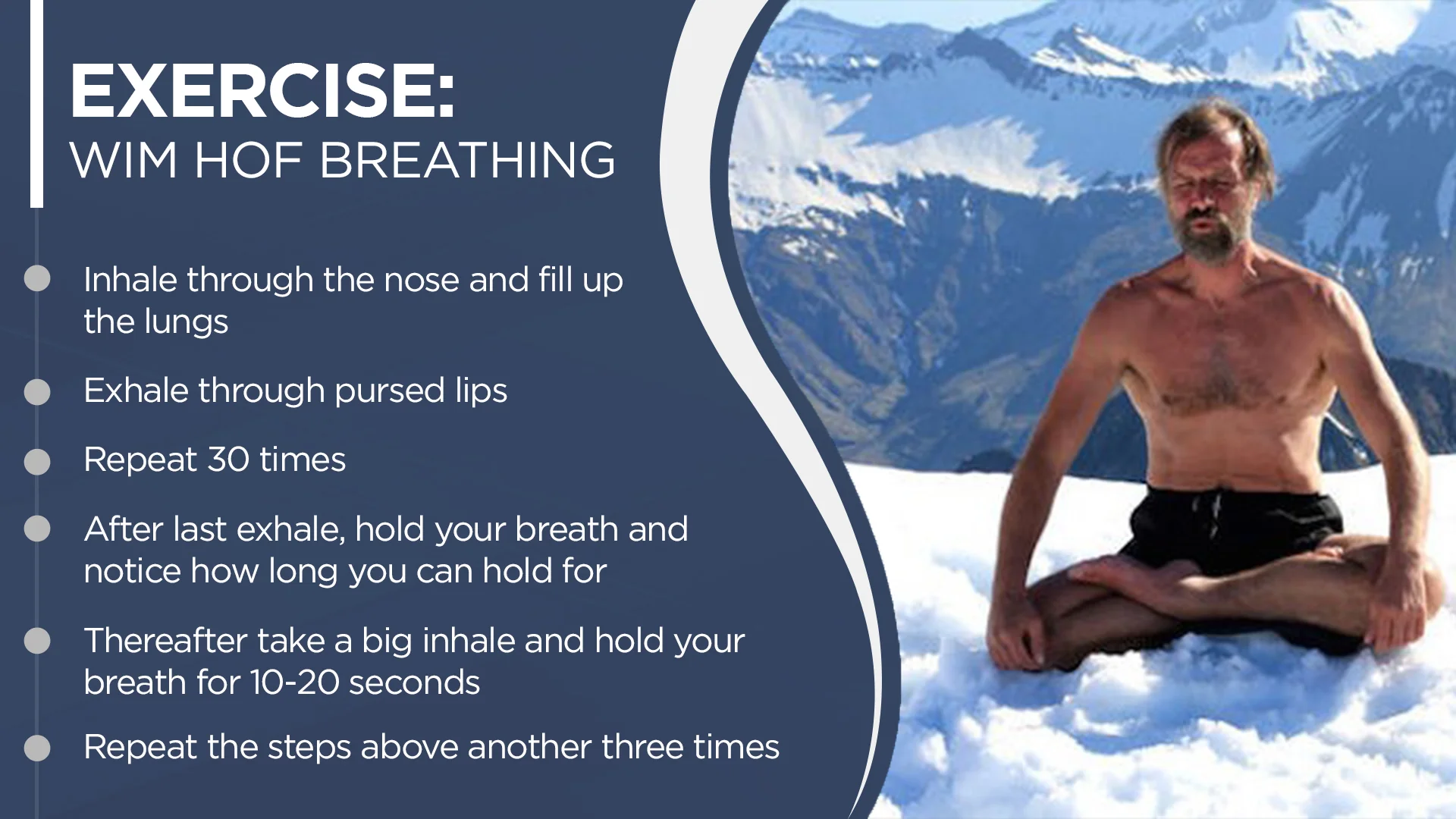Wim Hof Method

Wim Hof Method The Wim Hof Method is a breathing technique developed by Wim Hof, also known as "The Iceman." It is designed to help improve physical and mental well-being by utilizing specific breathing patterns, cold exposure, and mindset training. The method aims to increase energy levels, reduce stress, improve immune response, and enhance mental clarity. The breathing component is especially important in this method.
The Wim Hof Breathing Method consists of three key components:
- Controlled Breathing
- Cold Exposure
- Commitment / Mindset
Here's a breakdown of the steps for the breathing technique:
- Find a Comfortable Space: Sit in a comfortable, quiet space where you can fully focus without distractions. It’s best to practice on an empty stomach.
- The Breathing Technique (30-40 Breaths): The breathing pattern involves deep, rhythmic breaths: Inhale deeply through your nose or mouth, filling your lungs completely. Exhale passively through your mouth. Let the air flow out naturally, but don't force the exhale. Continue this process for 30-40 breaths. Inhale deeply and exhale completely. Don’t force the exhale; just let it happen. Focus on your breath and try to take full, deep breaths each time. Note: You may feel lightheaded or tingly sensations during this step. This is normal. Always do this exercise in a safe place, and if you feel uncomfortable, stop and return to normal breathing
- Retention (Holding Breath): After completing 30-40 breaths, inhale deeply one last time, filling your lungs completely. Exhale completely, then hold your breath for as long as you can without forcing it. During this retention phase, remain calm and relaxed. You may feel the urge to breathe, but resist it until you reach your limit.
- Recovery Breath: When you can no longer hold your breath, inhale deeply again. Hold the breath for about 10-15 seconds, then exhale. This completes one round.
- Repeat: Perform 3-4 rounds of this breathing sequence, with each round having 30-40 breaths, followed by the breath retention and recovery phase.